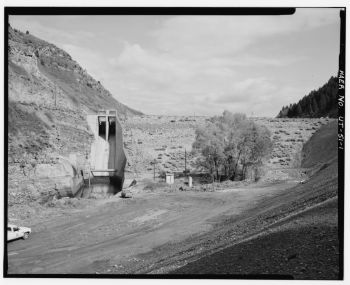Conduit Inspection

|
| Ogden Canyon Conduit, Ogden, Weber County, UT.
(Image Source: Wikimedia) |
Dam conduits are designed to transport water, sediment, or other fluids through or around a dam for various purposes such as irrigation, hydroelectric power generation, or flood control. Regular inspections of these conduits are crucial to ensure their integrity, identify potential issues, and plan for necessary maintenance or repairs.
Dam conduit inspections include visual examinations, instrumentation monitoring, and data analysis. The specific inspection methods may vary depending on the design, type, and size of the conduits, as well as the accessibility of the inspection points. Often, qualified engineers or dam safety professionals with expertise in conduit inspection will conduct the inspections.
During visual inspections, inspectors physically access the conduit’s condition and look for signs of distress such as cracks, erosion, corrosion, leaks, blockages, and structural deformations. They examine the interior surfaces, joints, connections, and other components to identify any issues that may impact the conduit's functionality.
Instrumentation monitoring also plays a significant role in conduit inspection. Instruments such as flow meters, pressure gauges, temperature sensors, and strain gauges, when installed in the conduit, can continuously monitor various parameters. They provide valuable data on flow rates, pressures, temperatures, and stresses, all of which help assess the performance of the conduit and detect any structural issues.
If necessary, non-destructive testing techniques may be utilized, including ground penetrating radar, ultrasonic testing, or magnetic flux leakage testing to assess the condition of the conduit's walls, identify defects, or detect potential areas of weakness or deterioration.
Data collected during the conduit inspection is analyzed to evaluate the condition of the conduit and identify any necessary maintenance or repair measures. Inspection findings are documented including observations and recommendations mad. These reports serve as a valuable reference for dam owners, engineers, or maintenance personnel, aiding in decision-making and prioritizing necessary repairs or upgrades.
